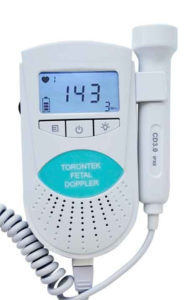Second Trimester Must-Haves
Pregnancy brings a new meaning to the concept of beauty. It is a period of immense joy coupled with excitement. The feeling of carrying a little soul within you is magnificent. Pregnancy is a time to celebrate because a little angel is coming soon.
The second trimester is the best part of pregnancy. Your nausea has subsided, you’re sleeping a little better, plus you’re finally looking legitimately pregnant. You will still probably use some of the things off of my first-trimester must-haves, but below are the list of additional must-haves for a happy second trimester!
Maternity wear
Clothes are definitely getting tighter at this point of your pregnancy so you’ll want to invest in some new clothing. I recommend loose dresses because not only are they comfortable, but they can grow with you and be worn after you have a baby. As your baby belly grows you’ll need a few key items of maternity wear. A good pair of maternity jeans that make you feel comfortable and will last you through the pregnancy is a savvy buy.
Sleep Aids
By now you may need some extra help getting a good night’s sleep. Fans, noise machines, earplugs, and body pillows are all useful aids for helping pregnant women get their zzz’s.
Comfy Pajamas
It’s common to feel really tired while pregnant. Your body is going through so much and working hard so you definitely want to get as much sleep/rest while you can and you will be most comfortable sleeping on your side as your belly grows. Now that your old pajamas probably don’t exactly fit so well anymore, it’s time to get a few pairs of comfortable Pajamas to survive these last few months.
Support Bra
By this stage – if not before – your breasts may have grown and felt more sensitive.Traditional bras don’t have room for the diaphragm to grow during pregnancy and they also have a traditional underwire which is not recommended to wear while pregnant or nursing. Having wider straps on a maternity bra is also important for support, especially for larger cup bras.Maternity bras provide firm elastic support without using wires.
Doula
A doula is a professional trained in childbirth who provides emotional, physical, and educational support to a mother who is expecting, is experiencing labor, or has recently given birth. The doula’s purpose is to help women have a safe, memorable, and empowering birthing experience. Whether you want a natural birth, a medicated birth, or a c-section, a doula is a great person to add to your support team to help you have the positive experience that you want.This is the time during your pregnancy to start interviewing and choosing the right doula for you.
Pregnancy books
Reading is one of the most vital talents a child needs in order to be successful in life. Books are one’s best friend and the early we inculcate this habit, it is excellent for the child. Reading while pregnancy not only increases the knowledge but also helps in making the bond between the mother and the baby stronger. It also triggers better concentration, a good attention span, distressing the mother of her tensions, resulting in a smarter baby.
The information, including but not limited to, text, graphics, images and other material contained on this website are for informational purposes only. The purpose of this website is to promote broad consumer understanding and knowledge of various health topics. It is not intended to be a substitute for professional medical advice, diagnosis or treatment. Always seek the advice of your physician or another qualified healthcare provider with any questions you may have regarding a medical condition or treatment and before undertaking a new health care regimen, and never disregard professional medical advice or delay in seeking it because of something you have read on this website.
Resources:
https://www.baby-chick.com/second-trimester-must-haves/
https://www.babycenter.com/0_pregnancy-shopping-checklist-second-trimester_5679.bc
Hypoxia and Hypoxemia
Hypoxia deficiency in the amount of oxygen reaching the tissues.
Hypoxemia an abnormally low concentration of oxygen in the blood.
When your body doesn’t have enough oxygen, you could get Hypoxemia or hypoxia. These are dangerous conditions. Without oxygen, your brain, liver, and other organs can be damaged just minutes after symptoms start.
Hypoxemia (low oxygen in your blood) can cause hypoxia (low oxygen in your tissues) when your blood doesn’t carry enough oxygen to your tissues to meet your body’s needs. The word hypoxia is sometimes used to describe both problems.
Symptoms
Although they can vary from person to person, the most common hypoxia symptoms are:
- Changes in the color of your skin, ranging from blue to cherry red
- Confusion
- Cough
- Fast heart rate
- Rapid breathing
- Shortness of breath
- Sweating
- Wheezing
- The inability to communicate
- Possible Coma or death
How It’s Treated
You’ll need to go to the hospital to get treatment for hypoxia and to keep a check on your oxygen level.
The most important thing is to get more oxygen into your body. You’ll receive it through a small plug in your nose or through a mask that covers your nose and mouth. For many people, this is enough to bring your oxygen level up to normal.
An inhaler or asthma medicine by mouth may make breathing easier. If these don’t help, the doctor might try giving you medicine through a vein in your arm (an IV). You might also need steroid drugs for a short time to shrink inflammation in your lungs.
When your life is in danger and other treatments aren’t working, you may need a machine to help you breathe.
Causes of Hypoxia
A severe asthma attack, or flare, can cause hypoxia in adults and kids. During an attack, your airways narrow, making it hard to get air into your lungs. Coughing to clear your lungs uses even more oxygen and can make symptoms worse.
Hypoxia can also result from lung damage due to trauma.
Other things can cause hypoxia include:
- Lung diseases such as chronic obstructive pulmonary disease (COPD) emphysema, bronchitis, pneumonia and pulmonary edema (fluid in the lungs)
- Strong pain medicines and other drugs that hold back breathing
- Heart problems
- Anemia (a low number of red blood cells, which carry oxygen)
- Cyanide poisoning (Cyanide is a chemical used to make plastics and other products.)
Preventing Hypoxia
The best way to prevent hypoxia is to keep your asthma under control, every day. Stick with your asthma treatment plan.
- Take your medicine to help prevent flares and the need to use your rescue inhaler.
- Eat right and stay active.
- Know your asthma triggers, and find ways to avoid them.
Work with your doctor to come up with an action plan for asthma attacks, so you know what to do when you have trouble breathing.
How is hypoxia and/or hypoxemia diagnosed?
In general, an individual patient’s hypoxemia is usually diagnosed by oxygen monitors placed on fingers or ears (pulse oximeter) and/or by determining the oxygen level in a blood gas sample (a sample of blood taken from an artery ). Normal readings are about 94% to 99% oxygen saturation levels; generally, oxygen is supplied if the level is about 92% or below.
Other tests may be ordered to determine if other potential problems such as carbon monoxide poisoning are responsible for the hypoxia.
Pulmonary function tests may also be ordered along with other studies to help determine the cause of unexplained low oxygen saturation.
The information, including but not limited to, text, graphics, images and other material contained on this website are for informational purposes only. The purpose of this website is to promote broad consumer understanding and knowledge of various health topics. It is not intended to be a substitute for professional medical advice, diagnosis or treatment. Always seek the advice of your physician or another qualified healthcare provider with any questions you may have regarding a medical condition or treatment and before undertaking a new health care regimen, and never disregard professional medical advice or delay in seeking it because of something you have read on this website.
Resources:
https://www.medicinenet.com/hypoxia_and_hypoxemia/article.htm
Pregnancy Kit must haves for First Trimester
Congratulations – you’re having a baby! When you are pregnant, thinking of all the stuff you may need for the baby can be mind blowing. First trimester is always a DOOZY. Any way you slice it. It’s just hard! But don’t jump the gun – they’re not even born yet so concentrate on the pregnancy must haves that will make YOU feel better along the way.
New Pants or a Waistband extender 
Your belly may not be visibly rounder yet, but your pants may not be fitting as well, even just a few weeks in. A new pair of pants with a bit of Lycra stretch might round out your wardrobe perfectly.If you don’t want to start buying new clothes just yet, try a waistband extender such as the Belly Belt or Bella Band. Keeping comfy is your new mission, and it’s more important than you may think: Some women report that a looser waistband helps with morning sickness.
Folic Acid
 If you’re pregnant or might become pregnant, it’s critically important to get enough folic acid, the synthetic form of vitamin B9, also known as folate. Folic acid helps prevent neural tube defects (NTDs) – serious birth defects of the spinal cord (such as spina bifida) and the brain (such as anencephaly).Taking a folic acid supplement, ideally before you conceive, and then every day for the entire first trimester will help prevent neural tube defects. A daily 400 mcg (microgram) supplement is recommended for most women. Some women need a 5mg (milligram) daily dose so check with your doctor if this applies to you.
If you’re pregnant or might become pregnant, it’s critically important to get enough folic acid, the synthetic form of vitamin B9, also known as folate. Folic acid helps prevent neural tube defects (NTDs) – serious birth defects of the spinal cord (such as spina bifida) and the brain (such as anencephaly).Taking a folic acid supplement, ideally before you conceive, and then every day for the entire first trimester will help prevent neural tube defects. A daily 400 mcg (microgram) supplement is recommended for most women. Some women need a 5mg (milligram) daily dose so check with your doctor if this applies to you.
Vitamin D 
The study confirmed vitamin D at this level is not only safe for you, but for your baby, and the researchers from this study now recommend this daily dosage of vitamin D for all pregnant women. The average prenatal vitamin only contains 400 IU of vitamin D, so additional supplementation should be taken daily. The Department of Health advice is to consider taking a 10 mcg (microgram) daily supplement. Vitamin D helps keep bones, muscles, and teeth healthy and it can be hard when pregnant to get the amount you need from food and sunlight alone.
Sickness Bands
The first 12 weeks of pregnancy is the time when morning sickness can often make you feel wretched. Morning sickness acupressure bands that you wear around your wrist may help alleviate that nauseous feeling that affects around 80% of women.
Body Pillow
 During pregnancy, you may find yourself wrestling in bed trying to get comfortable before falling asleep. Unfortunately, your regular sleeping positions may no longer work for you during pregnancy. There are a number of reasons for this new discomfort, but there are some sleeping positions that you can try that may help you get your much-needed rest. Pillows can help you avoid sleepless nights. You can try various pillows, either regularly used ones or those available specifically for pregnancy use. You may use body-length, U or C-shaped pillows, or wedge-shaped pillows to support your tummy or chest.
During pregnancy, you may find yourself wrestling in bed trying to get comfortable before falling asleep. Unfortunately, your regular sleeping positions may no longer work for you during pregnancy. There are a number of reasons for this new discomfort, but there are some sleeping positions that you can try that may help you get your much-needed rest. Pillows can help you avoid sleepless nights. You can try various pillows, either regularly used ones or those available specifically for pregnancy use. You may use body-length, U or C-shaped pillows, or wedge-shaped pillows to support your tummy or chest.
Read more: https://sonoline.ca/simple-guide-to-sleeping-well-during-pregnancy/
Tooth Care
 Oral health care – including teeth cleaning, X-rays, pain medication, and local anesthesia – is safe throughout pregnancy. In fact, it’s especially important to have a dental checkup, dental cleaning, and any necessary treatment during pregnancy. Pregnant women are susceptible to gingivitis (inflammation of the gums).
Oral health care – including teeth cleaning, X-rays, pain medication, and local anesthesia – is safe throughout pregnancy. In fact, it’s especially important to have a dental checkup, dental cleaning, and any necessary treatment during pregnancy. Pregnant women are susceptible to gingivitis (inflammation of the gums).
A comfy cotton Bra
The Dual-Use Maternity and Nursing Bra. Later in pregnancy, you have a feel for how things are going with your body. A multi-use bra can be key after the baby comes, for nursing, pumping, and overall comfort.This can double as a nursing and sleep bra because of the wide, comfy cotton that surrounds your breasts.
A good body lotion
Your skin is extra-sensitive now that you’re pregnant. Body scrubs and exfoliants can actually cause micro-tears on your skin, which isn’t just irritating, it can also make it easier for chemicals to be absorbed into it. You’re better off using a loofah or soft washcloth to scrub away dead skin cells.Cocoa Butter for stretch mark. Containing cocoa butter, vitamin E, collagen, elastin and shea butter, this cream is safe to use during pregnancy.
Baby Heartbeat Monitor (Fetal Doppler) 
A Doppler fetal monitor is a hand-held ultrasound transducer used to detect the fetal heartbeat for prenatal care. sometimes referred to as a pocket fetal Doppler. It uses the Doppler effect to provide an audible simulation of the heartbeat. The device sends sound waves through your skin and tissue in search of any movement. When movement is detected, the waves bounce back, creating a pattern, which the fetal Doppler records and plays back for you.You may be able to hear – and see – your baby’s heartbeat for the first time when you’re about 8 weeks pregnant if you have an early ultrasound exam. Otherwise, you’ll probably first hear baby’s heartbeat with a fetal doppler until 10 to 12 weeks.However, baby’s heart starts to beat at around 6 weeks. Fetal Doppler is highly recommended to ease anxiety and feel reassure throughout pregnancy.
Read more: http://torontek.com/pregnancy/what-is-fetal-doppler/
Pregnancy Journal 
Collecting your thoughts and putting pen to paper is especially rewarding during pregnancy. Not only will you have a personal record of your life during this time, you’ll create a special gift for your child years later. Few experiences are more magical than creating a new life in your own body and then watching it grow. Pregnancy is also a time of transformation and deep questioning for you. A pregnant woman’s inner life is powerful, private, and often disturbing. After pregnancy, nothing is ever the same.By keeping a diary or journal, a woman chooses to confront rather than ignore the issues that come up for her during pregnancy. Her quiet time of introspection and writing will be among the most important moments she spends on her journey into motherhood.
The information, including but not limited to, text, graphics, images and other material contained on this website are for informational purposes only. The purpose of this website is to promote broad consumer understanding and knowledge of various health topics. It is not intended to be a substitute for professional medical advice, diagnosis or treatment. Always seek the advice of your physician or another qualified healthcare provider with any questions you may have regarding a medical condition or treatment and before undertaking a new health care regimen, and never disregard professional medical advice or delay in seeking it because of something you have read on this website.
Resources:
https://www.webmd.boots.com/pregnancy/features/pregnancy-kit-essentials
https://www.babycenter.com/0_write-your-own-pregnancy-diary_5827.bc
How To Cope With Miscarriage
How To Cope With Miscarriage
Different people handle miscarriage in different ways, but it’s not uncommon to feel devastated as you would after any other loss in your life. If you’re having trouble coping with a miscarriage or it’s causing a rift in your relationship with your partner, ask your doctor for a referral to a therapist for counseling services.
Try not to let distance grow between you and your partner. 
This one’s easily done. He’ll see the whole situation differently. He might try to fix it. He might wonder why it’s taking you so long to get over it. He probably won’t have a clue about the million and one ways it affects you every day. Unless you explain it in terms he’ll understand.
Get your Friends around you 
Friends or relatives; it really doesn’t matter – you need women you can trust. Women you can cry with. Women who can hug you. Because no matter how sympathetic a man is, a woman will understand you in a very different way, and part of the healing lies in fully comprehending the loss, all its implications, navigating the train wreck and beginning to get a little perspective.
Take your time to “get over it”
Grief affects everyone differently. Don’t anticipate a certain length of time before you feel ‘normal’. Go with what works for you at the moment. Don’t rush. Whatever you’re feeling is normal, has been felt by others before you, is not completely mad. If you need it, seek professional help to get through this.
Take care of yourself
It should go without saying, but it’s easy to let grief swallow you whole. It’s a vile, heartbroken place to be, (and you may hate me for saying it if you’re still in that darkness) but you did not stop living. You will do yourself no favors in the short or long run if you grind to a halt. You need to eat, you need to wash, you need to get up in the morning and do *something*. Even if these things seem hollow and pointless, keep going – persist and it will help you later. Do it for the ‘you’ in a few months time.
The loss of a child in pregnancy is a terrible tragedy which can never un-happen. If it’s happened to you, you’re part of the Invisible Moms Club. Your life was altered the moment conception took place; you are a Mom, and it’s heartbreaking that you haven’t that child to show for it. Yet Good can still be wrought, even of this pain – whether it’s sharing your story so that understanding and compassion can be spread, or being able to offer a shred of comfort and hope to a young woman suddenly faced with the loss of her unborn child and all that entails.
Miscarriage Causes
Miscarriage Causes
Experiencing the loss of a pregnancy can be devastating and you’ll probably have a lot of questions, including why did this happen? It’s not uncommon to start blaming yourself, but most miscarriages happen in the first trimester of pregnancy for reasons that are beyond your control. In the majority of cases, there’s no way to prevent a miscarriage and nothing you could or should have done differently. Below are three common miscarriage causes.
What Causes Miscarriage?
A miscarriage sometimes happens because there is a weakness of the cervix, called an incompetent cervix, which cannot hold the pregnancy. A miscarriage from an incompetent cervix usually occurs in the second trimester. There are usually few symptoms of a miscarriage caused by cervical insufficiency.
Chromosomal abnormalities
More than half of early miscarriages are due to a chromosomal abnormality when the sperm and egg come together but one of them has too many or too few chromosomes, those tiny structures in each cell that carries our genes. A chromosome abnormality, disorder, anomaly, aberration, or mutation is a missing, extra, or irregular portion of chromosomal DNA. It can be from a typical number of chromosomes or a structural abnormality in one or more chromosomes.
Medical disorders
Chronic medical conditions such as blood clotting disorders, thyroid disease, and diabetes can increase your miscarriage risk. Certain autoimmune diseases, such as lupus, can also directly affect pregnancy. That doesn’t mean that if you have an autoimmune problem, you can’t deliver a healthy baby, but you do need to talk to your doctor about the risks of miscarriage and complications, and the best ways to plan for pregnancy.
Uterine abnormalities
A uterine malformation is a type of female genital malformation resulting from an abnormal development of the Müllerian duct(s) during embryogenesis. Symptoms range from amenorrhea, infertility, recurrent pregnancy loss, and pain, to normal functioning depending on the nature of the defect.
Missed miscarriage or miscarriage at 4 weeks
A missed miscarriage, also sometimes known as a silent miscarriage or missed abortion, can happen anytime prior to week 20 when an embryo or fetus dies but the body hasn’t recognized the loss or gotten rid of the pregnancy tissue. Since the placenta may still continue to release hormones, some women keep having pregnancy symptoms, but others may have a loss of pregnancy symptoms and a brownish discharge. A missed miscarriage is often diagnosed during a checkup when a doctor no longer finds a heartbeat.
Threatened miscarriage
A missed miscarriage, also known as a missed abortion or a silent miscarriage, occurs when a fetus dies, but the body does not recognize the pregnancy loss or expel the pregnancy tissue. As a result, the placenta may still continue to release hormones, so the woman may continue to experience signs of pregnancy. A threatened miscarriage is your body’s way of giving you a warning sign that miscarriage is a possibility during the first three months. You may experience symptoms of vaginal bleeding and abdominal pain, but the cervix remains closed and a heartbeat remains.
Incomplete miscarriage
An incomplete miscarriage happens when your body only pushes out some of the pregnancy tissue. Symptoms include bleeding, cramping and a dilated cervix. A pregnancy test might still be positive but the fetus is no longer viable. Most of the time an incomplete miscarriage will become complete on its own, but you may need medical intervention to help remove the remaining tissue. An incomplete miscarriage often requires treatment. Medicine or a procedure call dilation and curettage (D&C) is used to clear the tissue from the uterus.
Blighted ovum
A blighted ovum occurs when a fertilized egg implants in the uterus but doesn’t develop into an embryo. It is also referred to as an anembryonic (no embryo) pregnancy and is a leading cause of early pregnancy failure or miscarriage. Often it occurs so early that you don’t even know you are pregnant. Your doctor may call this an “anembryonic pregnancy,” and it almost always happens in the first trimester. It means that the fertilized egg attached to the wall of your uterus, and while it may have begun to develop a placenta, it never developed into an embryo.
What Does Miscarriage Feel Like?
The amount of pain varies for everyone. Some women feel nothing and don’t even realize it’s happening; others feel a range of aching and cramping, from mild to strong, like a really bad period; and some women experience full-on, painful labor contractions that last for hours or even days.
If the pain is really intense, the bleeding is very heavy (you’re soaking a pad every hour) or the remains of the pregnancy don’t pass completely (an ultrasound will confirm this), your doctor may perform a D&C (dilation and curettage) or, if you’re beyond the 14-week mark, a D&E (dilation and evacuation). Brief surgical procedures will put an end to cramps and bleed and help prevent an infection, which may happen if any of that tissue remains behind in the uterus. Both procedures are typically done in a hospital or surgical center, and you’ll either get local or general anesthesia, so you shouldn’t feel anything. Unless there are complications (which are rare), you can usually go home the same day. Expect some strong cramping the first 24 hours after the procedure—that’s totally normal—and then mild cramping and light spotting for a few days up to two weeks. Taking Tylenol or Advil can help alleviate any post-procedure pain.
Can stress cause miscarriage?
There’s no evidence that stress directly affects miscarriage risk, but it may play a role. Research shows that a mother’s physical and emotional state—including her fitness level and quality of nutrition—can raise or lower her level of stress sensitivity, potentially influencing everything from fertility and conception to the quality of the placenta and the risk for premature labor. Focusing on nutrition, exercise (approved by your doctor) and mind-body relaxation, especially in the first and second trimesters of pregnancy are best options. But there’s no need to check yourself into a month-long spa retreat (well, unless you want to!). It could be as simple as taking an extra 15 minutes after lunch to listen to some relaxing music, decompress and let your body absorb the nutrients you’ve just eaten.
Healthy pregnancy after a miscarriage
How soon after a miscarriage can you try to get pregnant again?
It depends on physical and emotional factors. Every case is different, but unless you’ve had other physical complications from your miscarriage, you can usually start trying to conceive once your doctor has given you a green light. Usually can wait until your next normal cycle, anywhere from four to six week. If you want to wait longer that’s totally normal too—give your mind and body the time they need to heal, and you’ll know when you’re ready to try again.
Miscarriage is usually a one-time occurrence. Most women who miscarry go on to have healthy pregnancies after a miscarriage. A small number of women — 1 percent — will have two or more miscarriages. The predicted risk of miscarriage in a future pregnancy remains about 14 percent after one miscarriage.
If the cause of your miscarriages can’t be identified, don’t lose hope. Most women who experience repeated miscarriages are likely to eventually have healthy pregnancies.
Symptoms of Miscarriage
Symptoms of Miscarriage
Numerous environmental and biological effects may cause a number of issues to the developing fetus. A miscarriage or spontaneous abortion is defined as the loss of a pregnancy during the first 20 weeks of pregnancy. However, up to 75% of miscarriages happen in the first trimester.
The unhealthy living is unquestionably the greatest enemy of a developing fetus, while there can be much milder or serious medical conditions that can harm the growing baby. For example, smoking, drinking alcohol, and drug use during pregnancy cause extreme damage to the fetus and most frequently result in miscarriages or severely damaged babies. Ultimately, no matter the numerous potential causes, every woman should note when the miscarriage actually takes place.
What is a miscarriage?
Miscarriage or spontaneous abortion, which is defined as the spontaneous loss of a pregnancy in the first 20 weeks, is the most common type of pregnancy loss but there are many different types of miscarriage depending on when and how it happens.
To help with the confusion, here’s a look at the specific meanings behind some different symptoms of miscarriage.
Bleeding
Bleeding or spotting is the most common miscarriage sign. Bleeding and pain similar to those during periods can potentially signify that something wrong is occurring in the womb. This is the most basic symptom of a miscarriage, and it’s generally always present, no matter the nature of the cause. Bleeding is somewhat frequent during normal pregnancies as well, but only if this involves a transient spotting. If you’re experiencing symptoms of heavy bleeding, clotting, and/or if you feel dizzy or faint during pregnancy, head to the nearest emergency room.
Extreme pain
Cramping is very common during pregnancy. Some women experience more than just cramping. If you’re having painful contractions 5 to 20 minutes apart, this could be a sign of premature labor.However if the pain is intense and extending to the pelvic area and lower back it could be a warning of miscarriage,
especially if bleeding and labor contractions accompany this. Women that have experienced a miscarriage often say that it was the greatest pain they’ve ever felt.
Chills
Chills with fever or pain can be signs of an infection and should be treated by a health professional. Infection might seriously jeopardize the pregnancy. Chills can accompany heavy bleeding during spontaneous abortion due to resulting low blood pressure which hampers a normal distribution of the blood in the body, and thus, leads to a decreased body temperature.
Cramps
Usually, cramps aren’t a worrying sign, since they can also be experienced during normal pregnancies as the body adjusts to a growing baby. However, a pregnant woman who has heavy period-like cramps that don’t cease quickly should seek a medical advice. Cramping might also present as lower back pain or as pelvic pressure. As with bleeding, persisting cramps after the expulsion of the fetus may orient towards an incomplete abortion. In such case, surgical assistance might be needed to expel all the uterine contents.
Experiencing miscarriage is emotionally challenging and having a family consultation is a good approach to helping to pave the path for next pregnancy. Many parents who have experienced miscarriages use the Fetal dopplers in future pregnancies to give them a sense of reassurance and peace.








